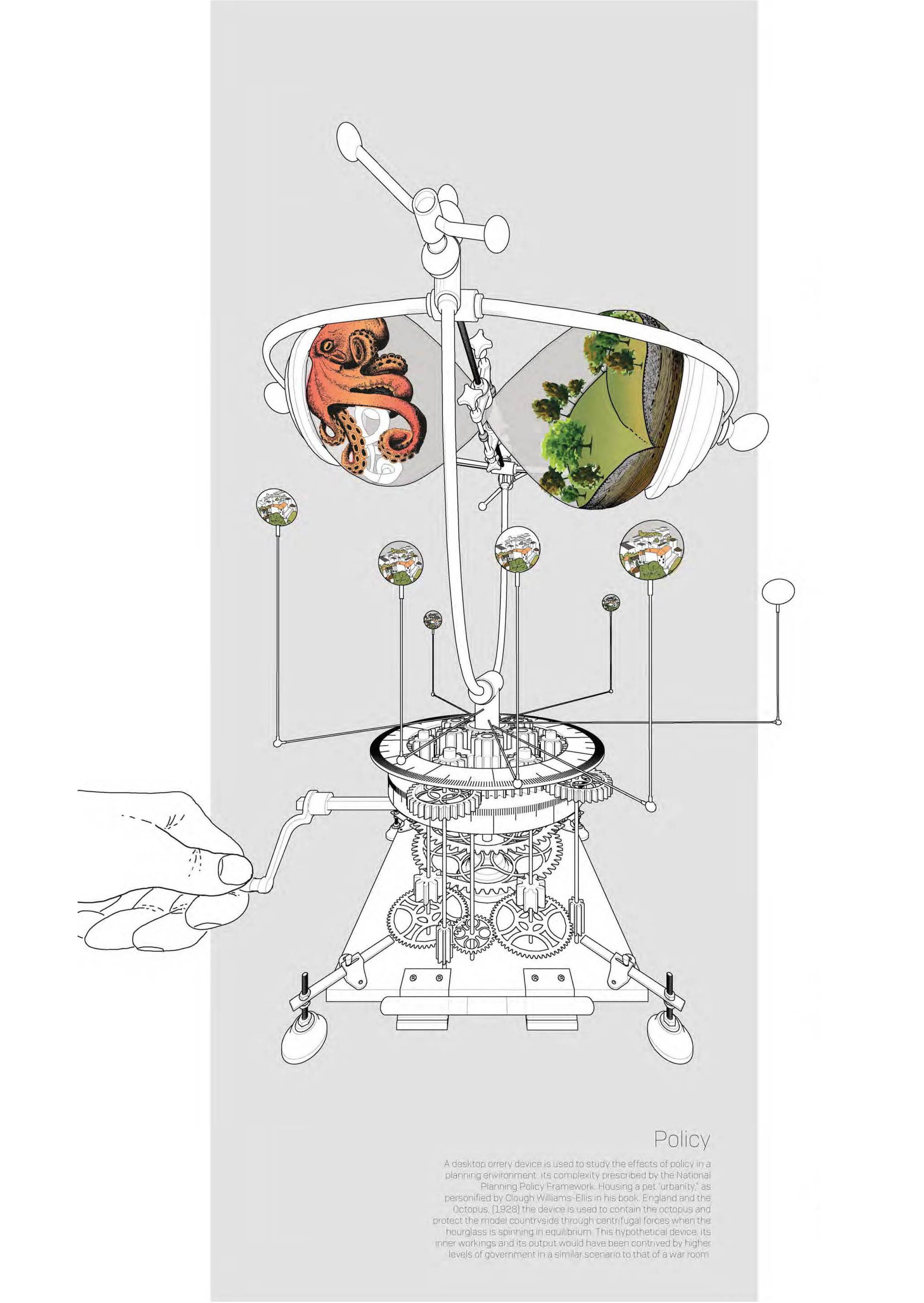
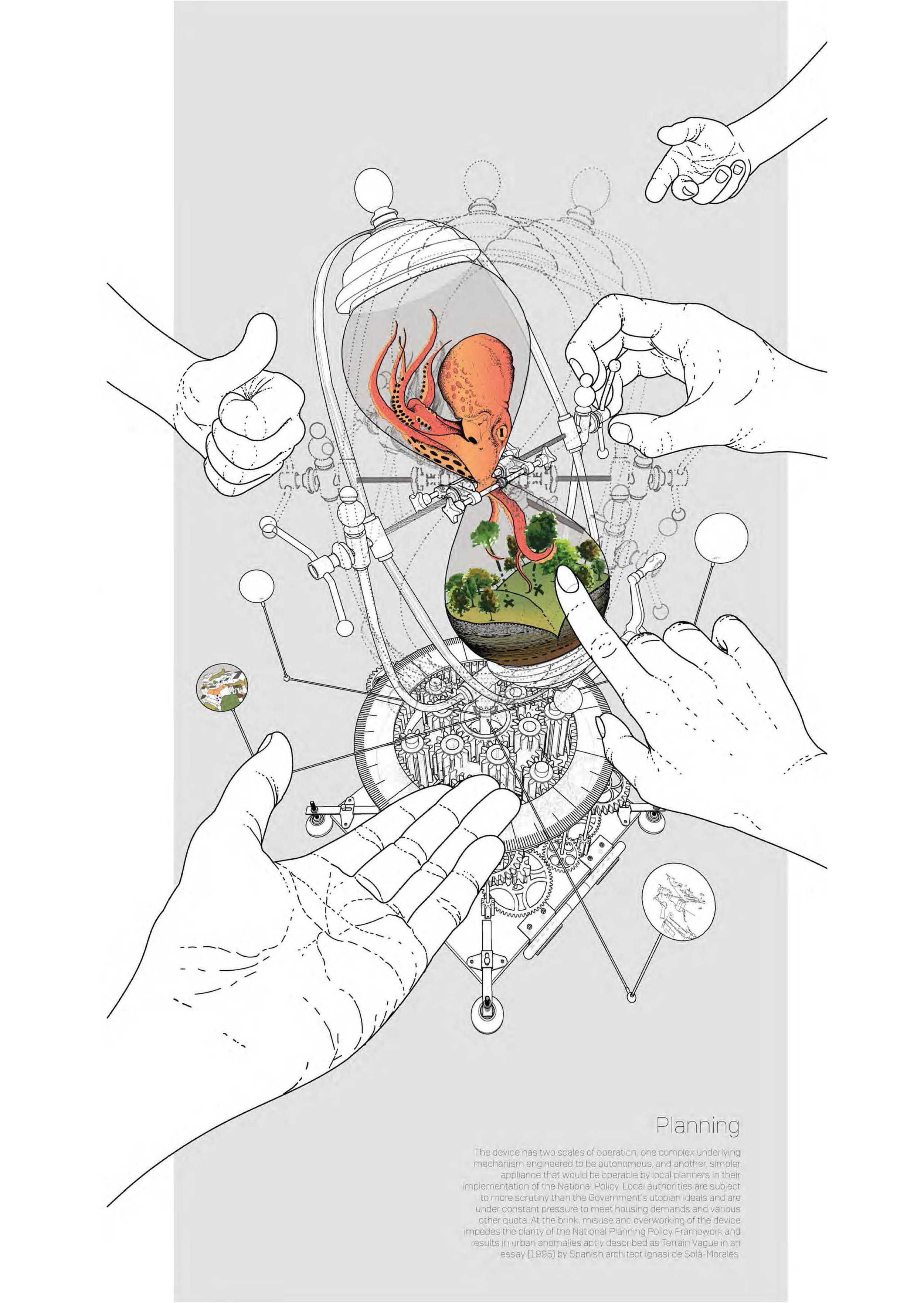
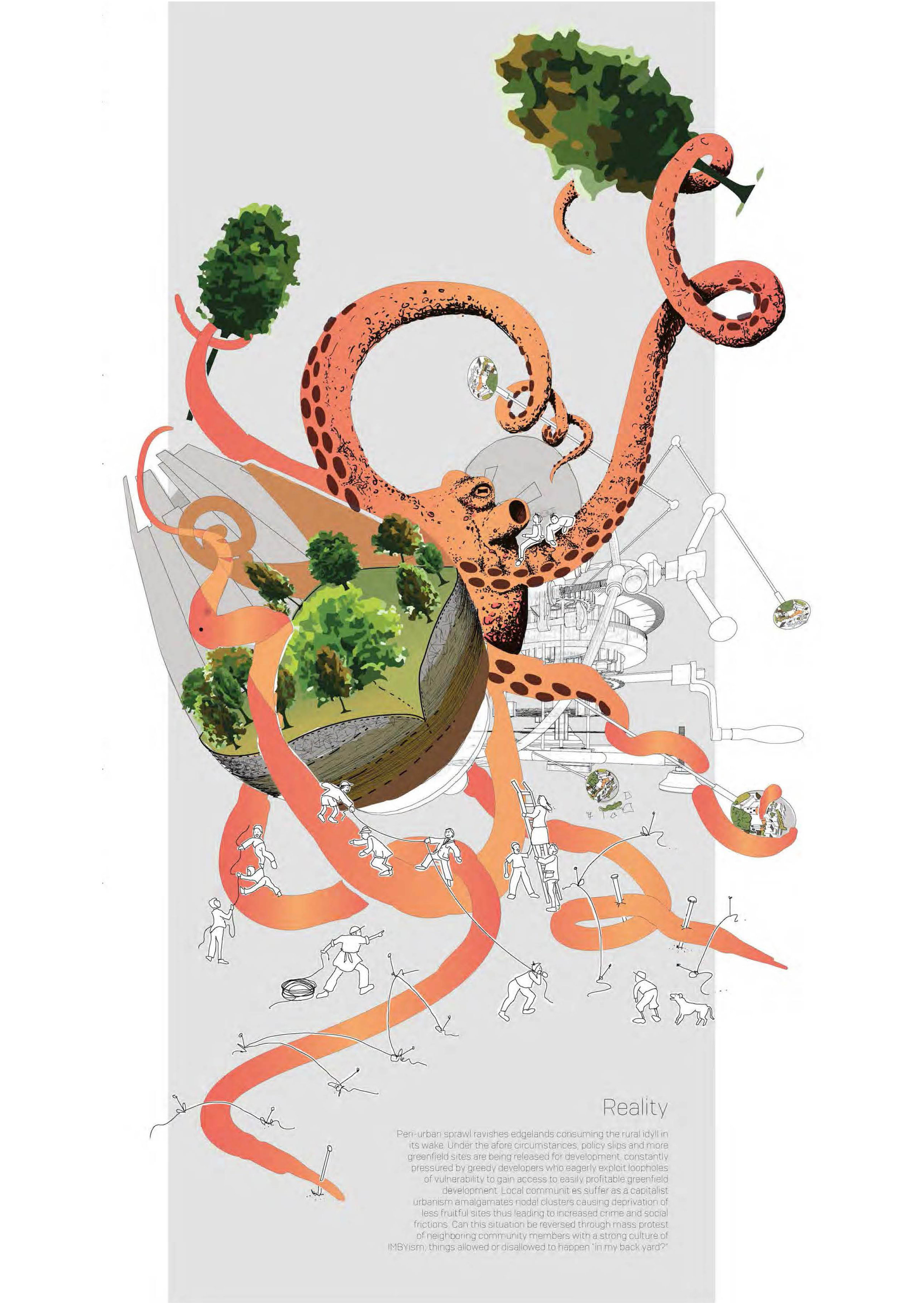

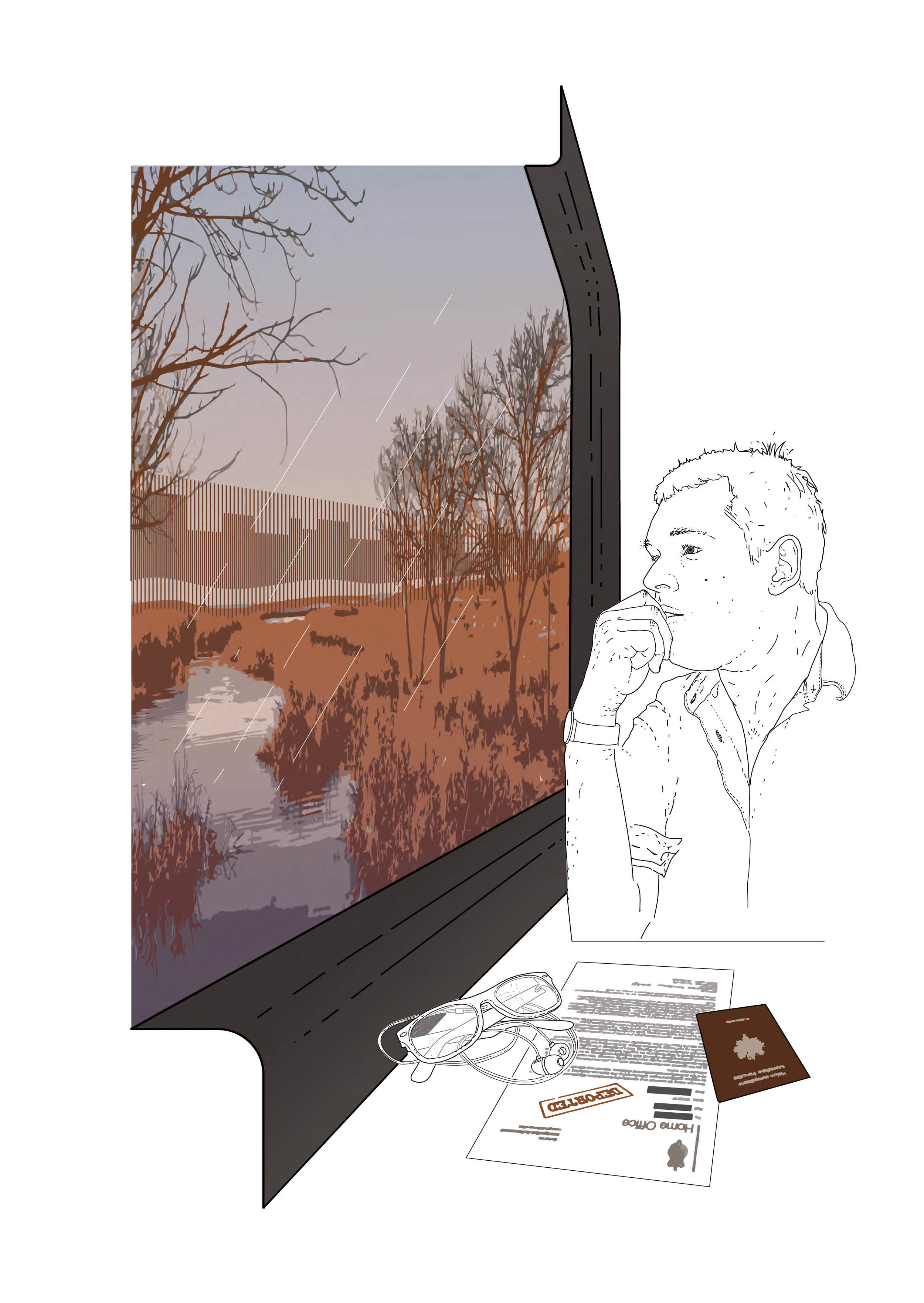
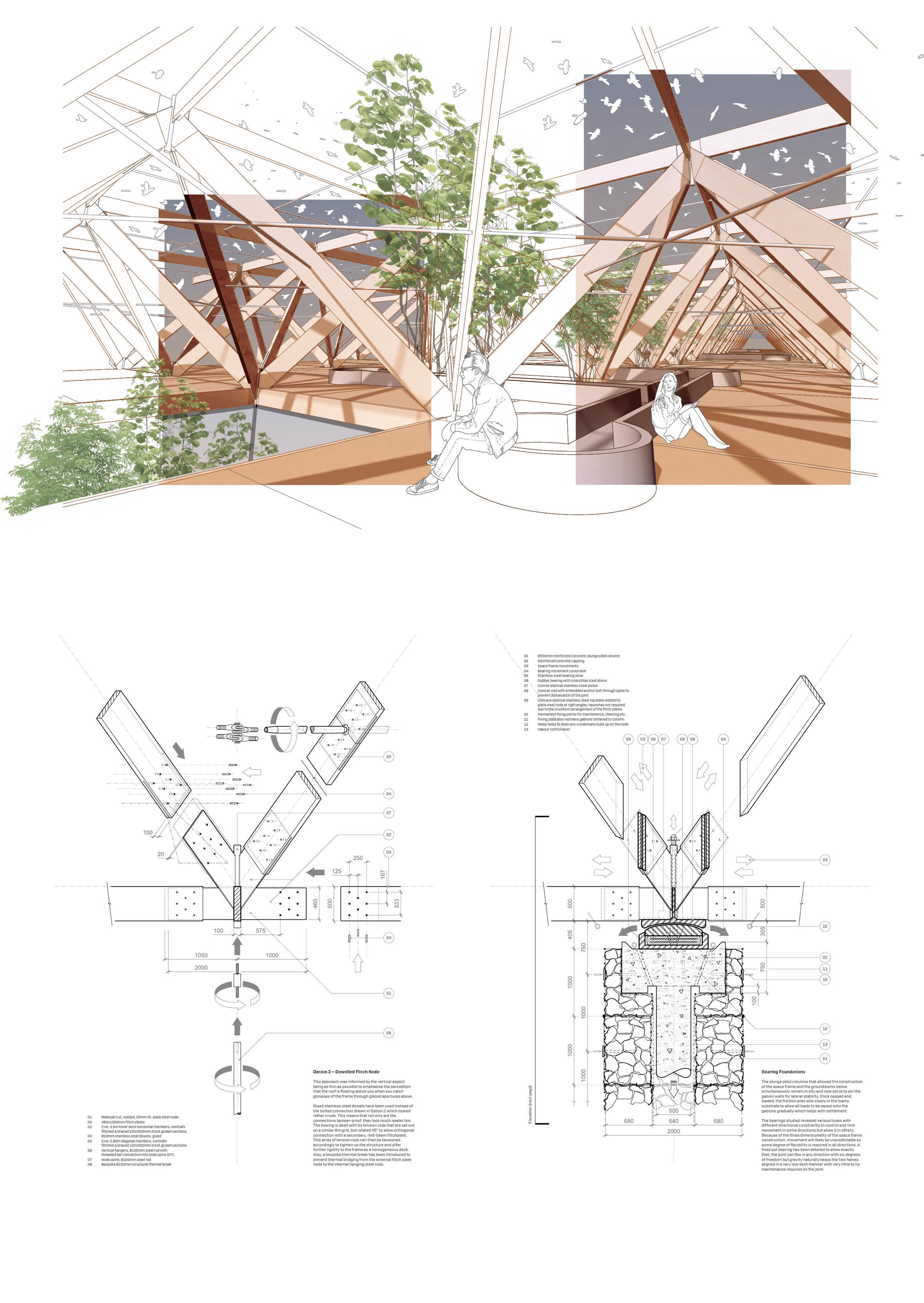
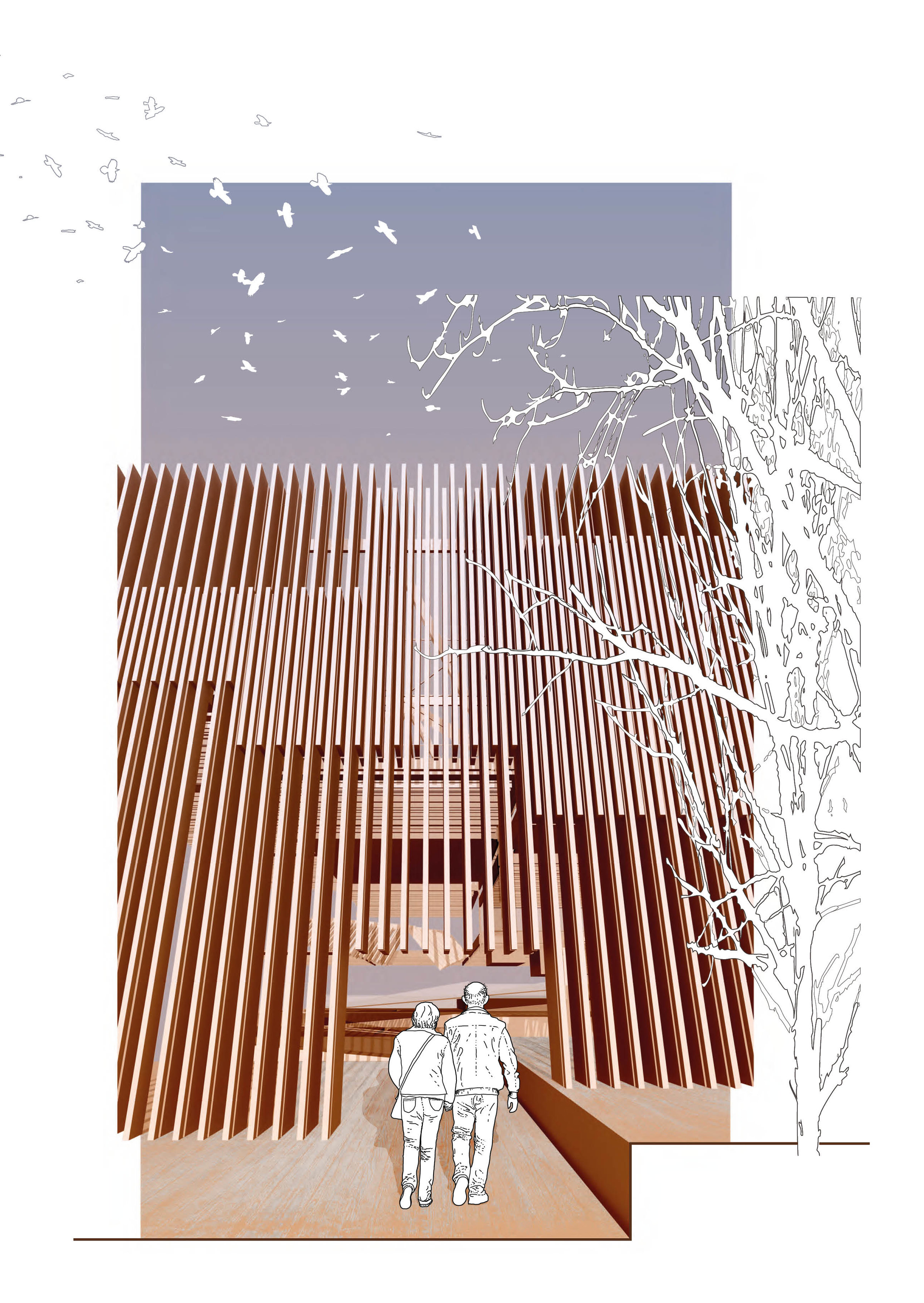
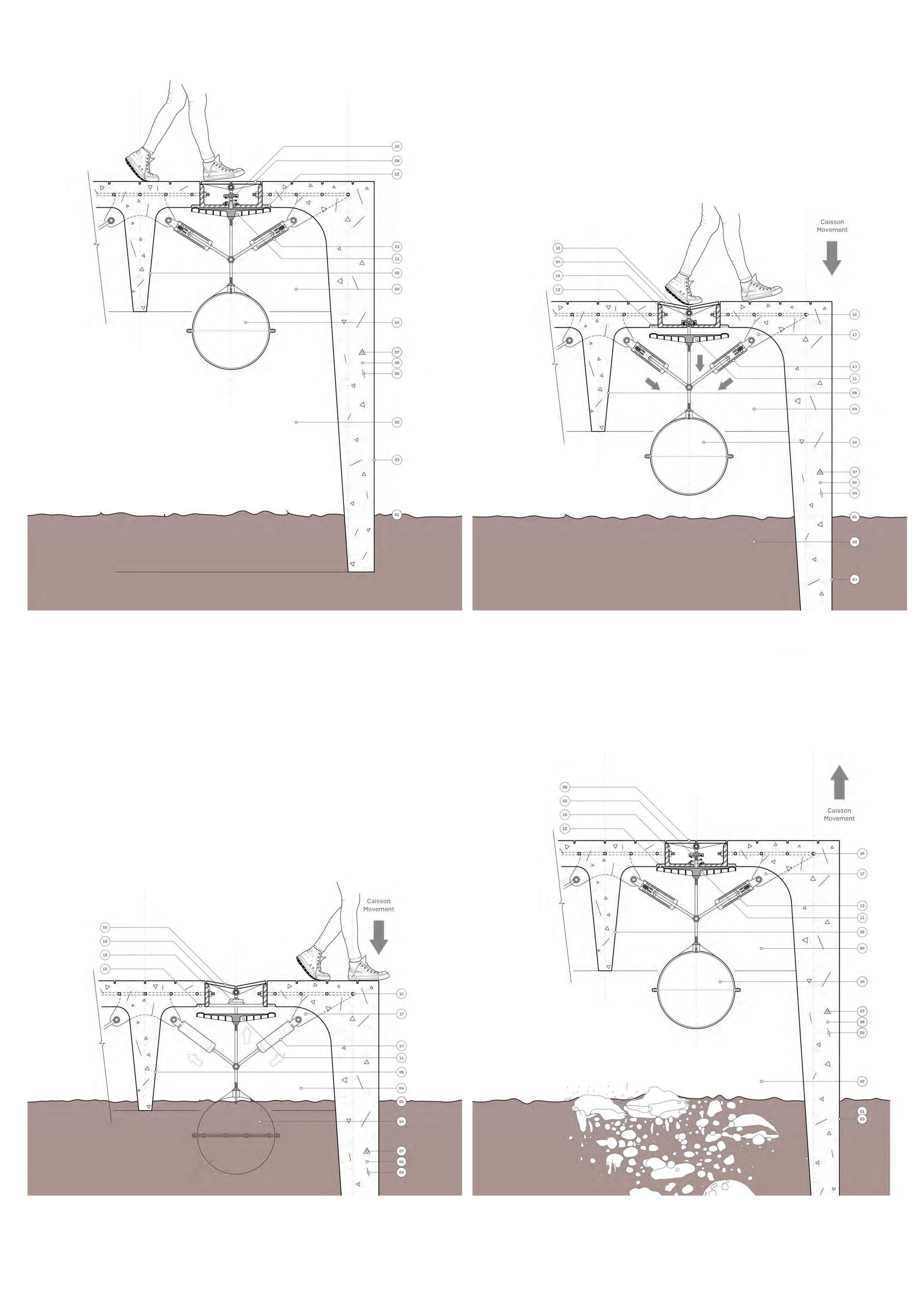
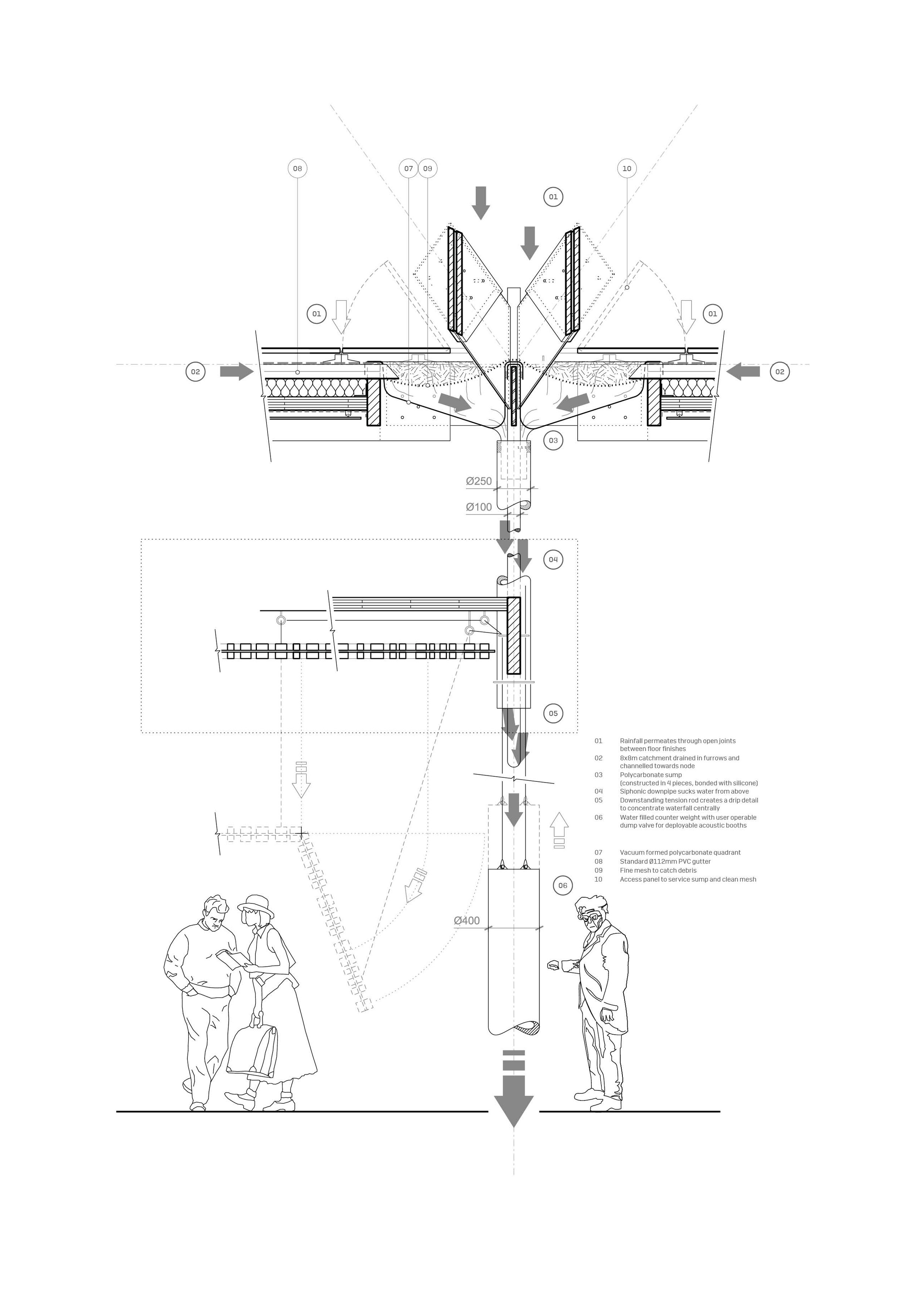
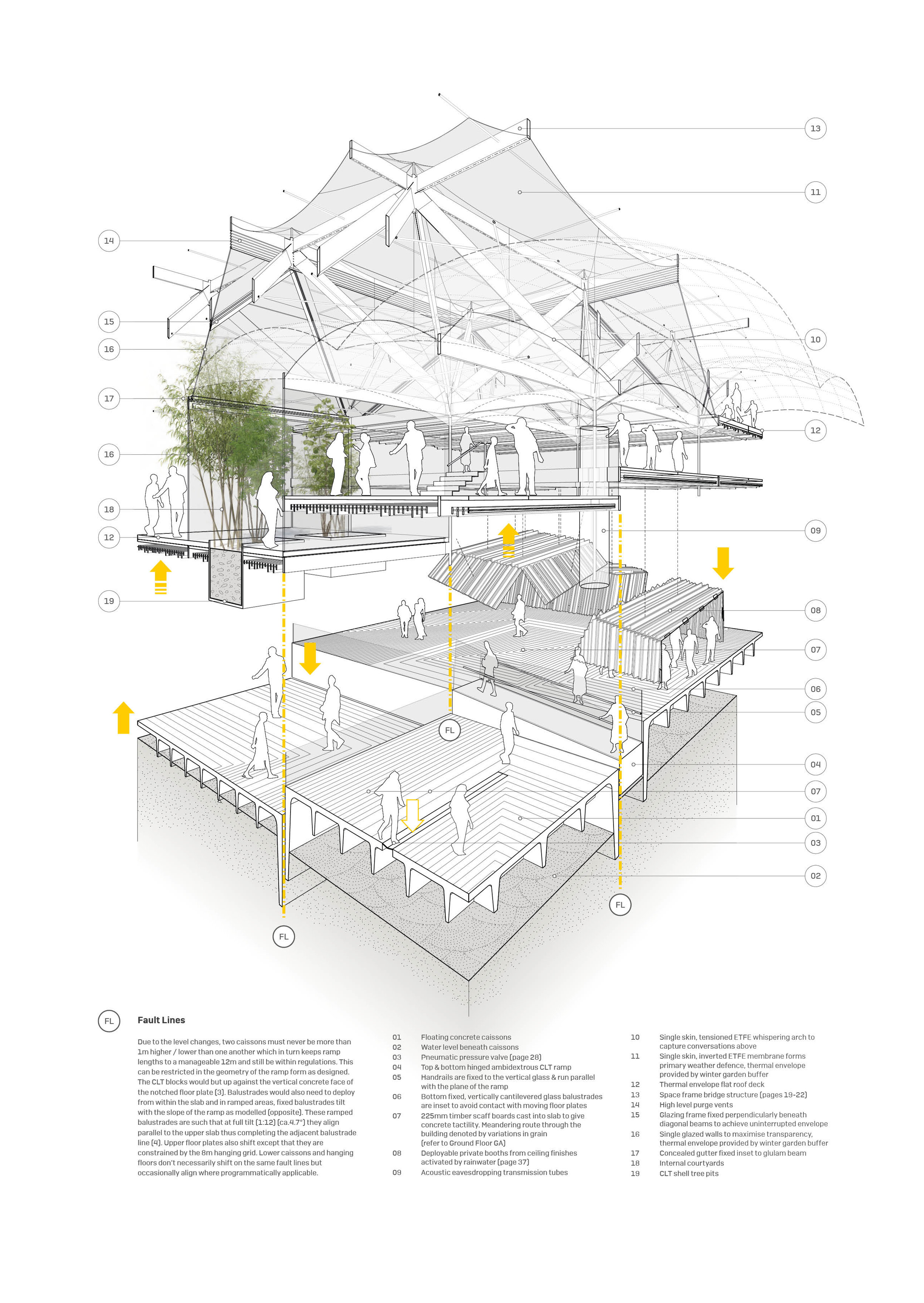
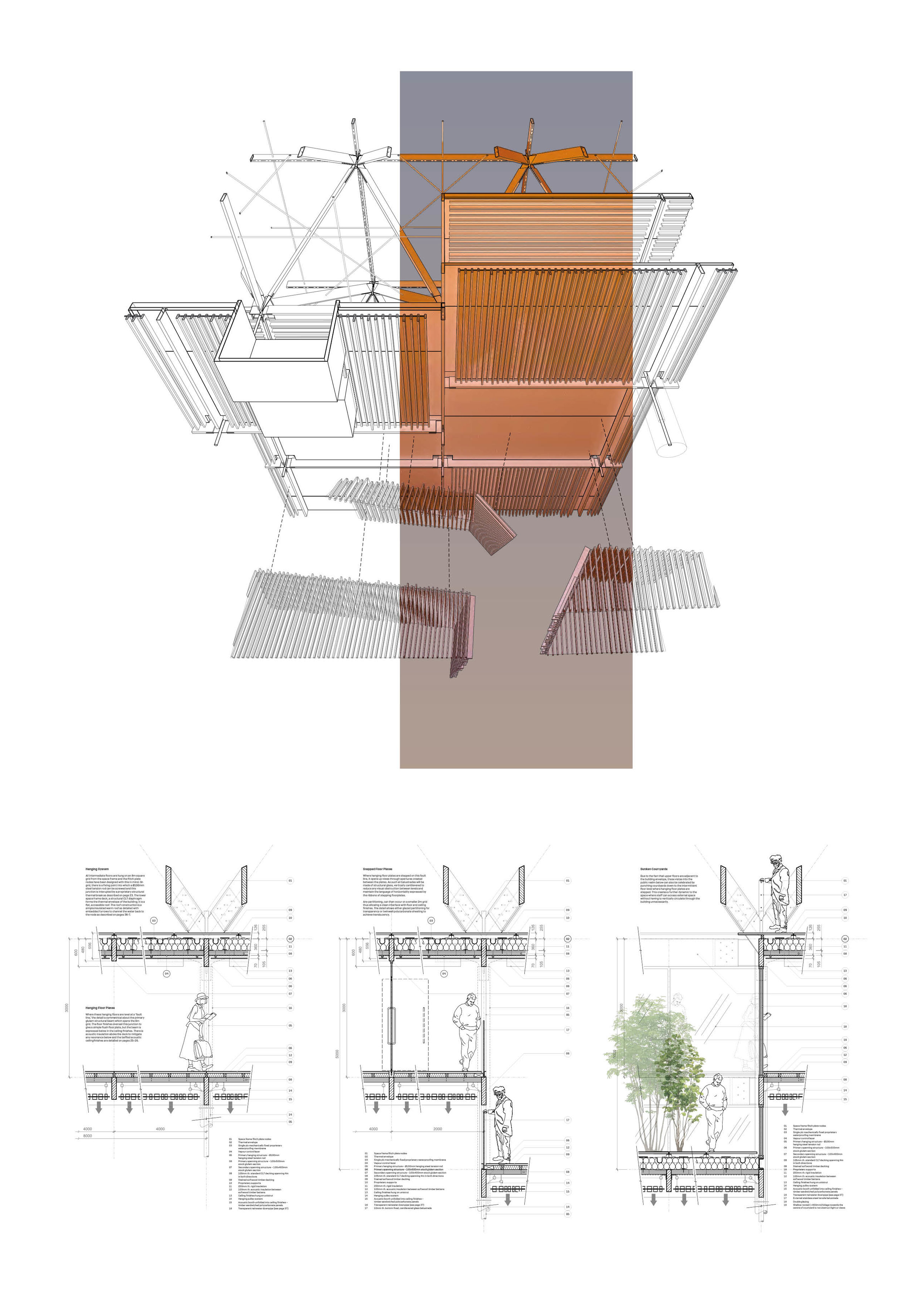


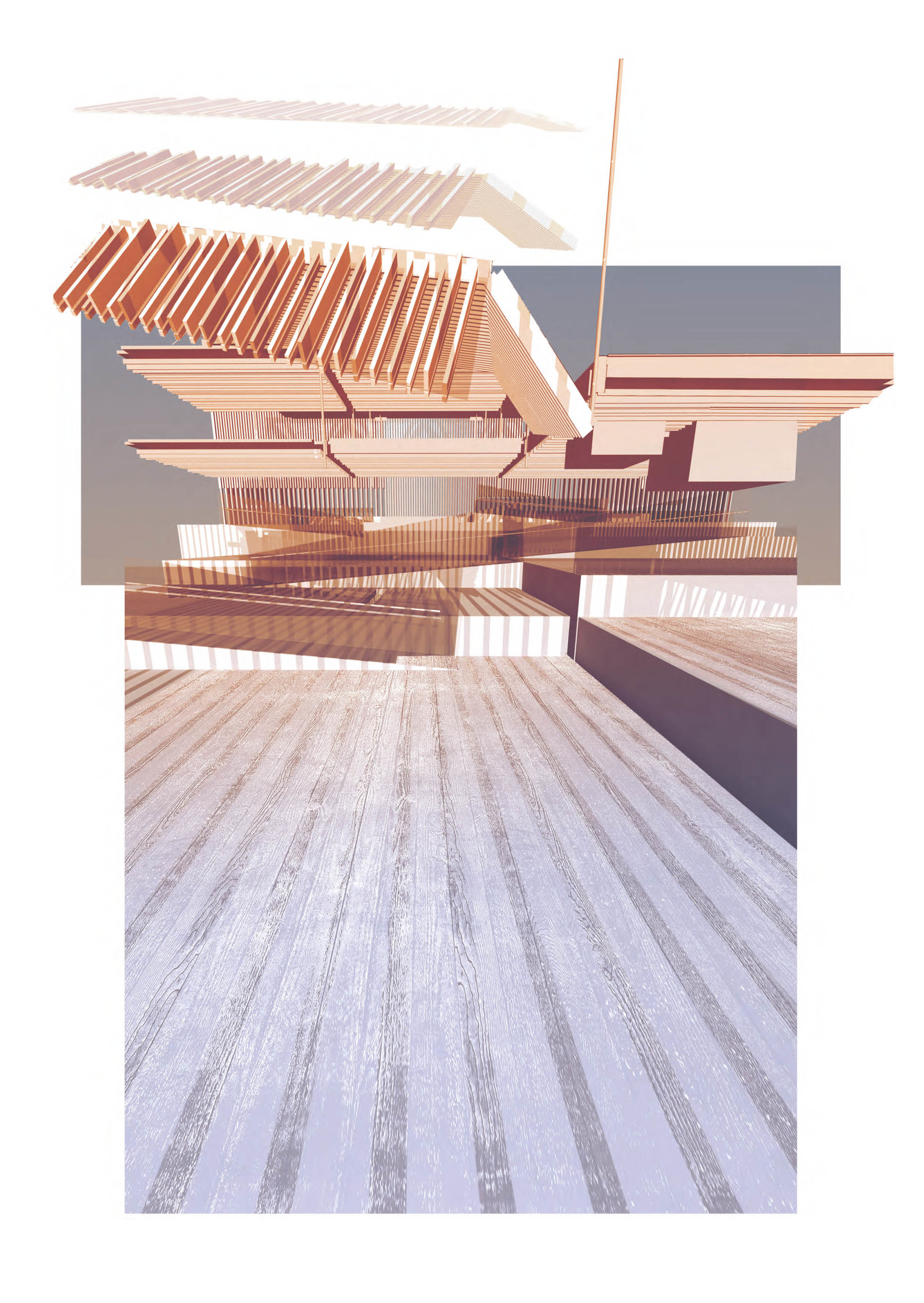
Nick Salthouse Y4
An Architecture of Uncertainty. London’s Metropolitan Greenbelt is a spatially threatened idyll and equally hostile political landscape. In pursuit of preserving this National Reserve, this project seeks to modernise the policy by addressing the most vulnerable point of the Greenbelt’s erosion. With an average width of 6-10 miles, the Greenbelt thins to a mere 2 miles inland of the Medway Towns the Thames Gateway – mostly brownfield land designated a national priority for urban regeneration during the early years of the Blair ministry.
By cataloguing cancerous pockets of derelict urban fabric floating through the Greenbelt like flotsam, an avenue of marine law was explored by drawing similarities between this pseudo-urbanity and the legal classification of debris floating through the ocean. To accumulate a large enough body of evidence against the harmful redundancy of Ian Nairn’s, the project employs a culture of ‘imbyism’ to scale the momentum of lobbying power and bring it to the attention of a more political audience.
In politically uncertain times, an architectural intervention on the Swanscombe Peninsula offers extraterritorial amnesty from Theresa May’s ‘Hostile Environment’. Reconfiguring itself with the tides, the building is metaphorically representative of this political ebb and flow. A programmatic flexibility within an otherwise open-plan space results in it’s present configuration being graphically embossed in the façade. The spatial configuration straddles the line between transparency and accessibility, publicity in private and conversely, privacy in public. It offers sanctuary to those in need but equally a platform for the public administration of immigration rights
